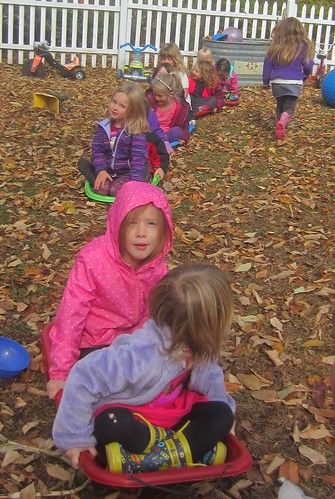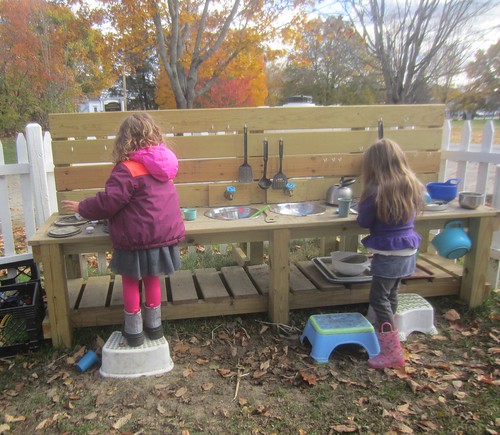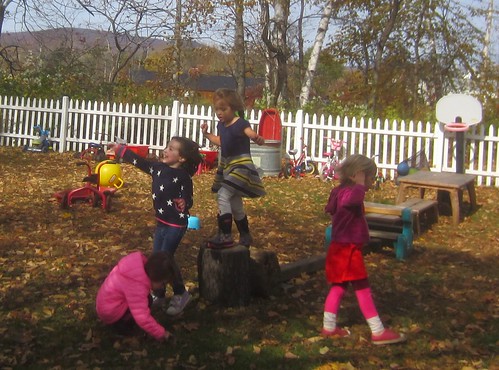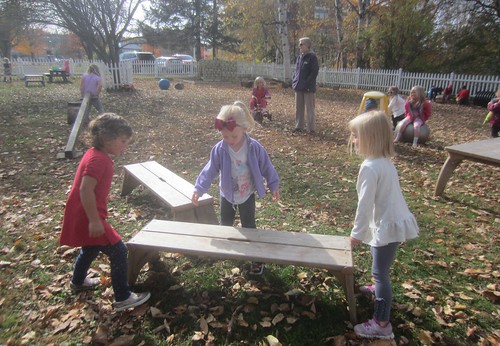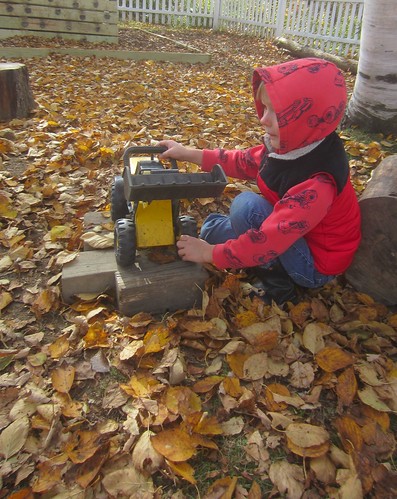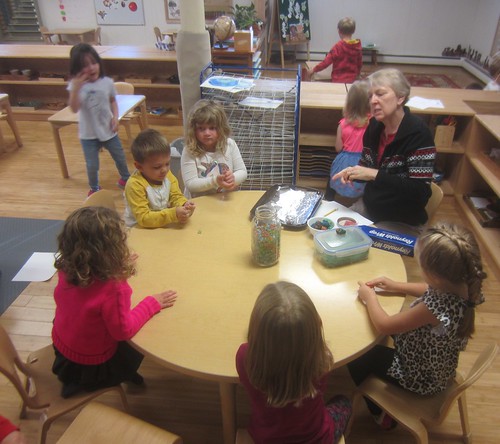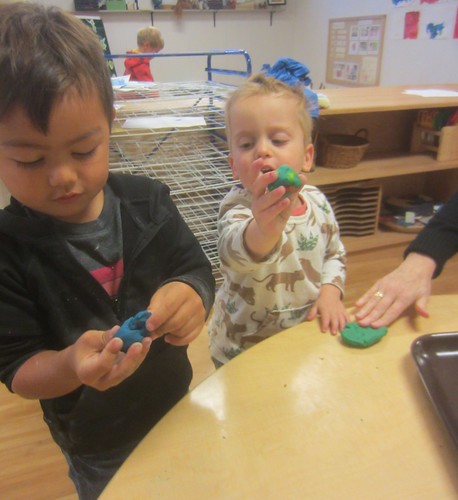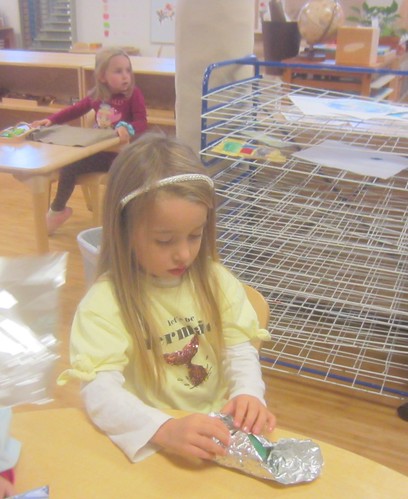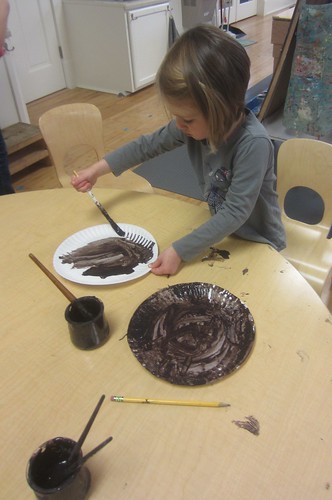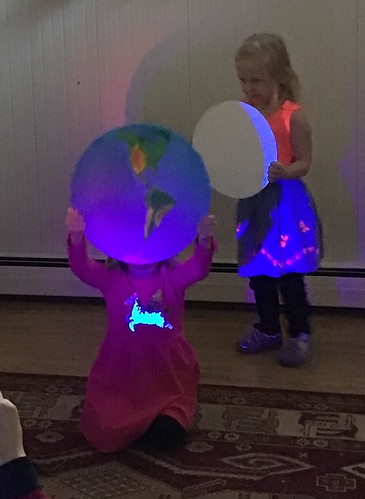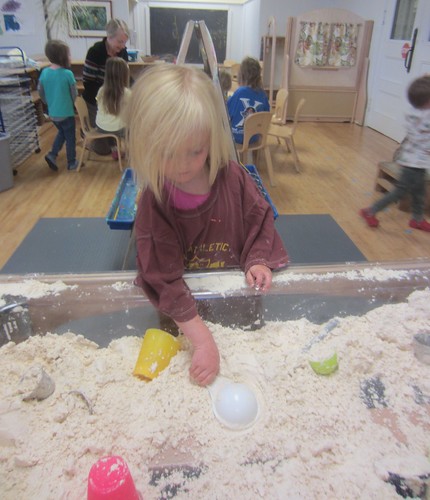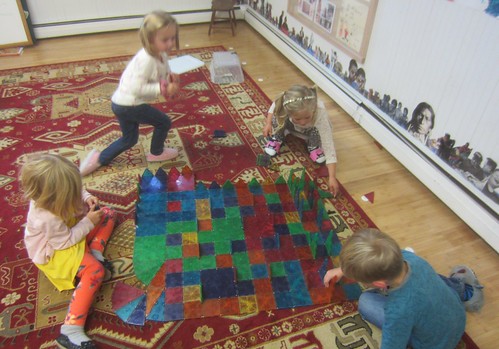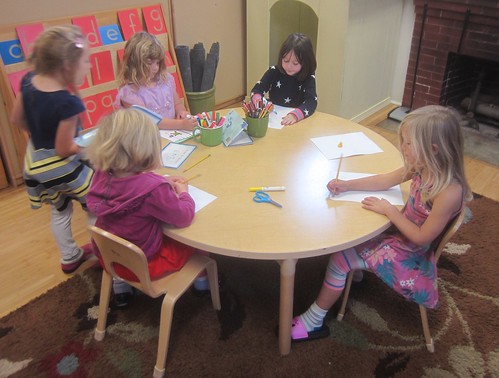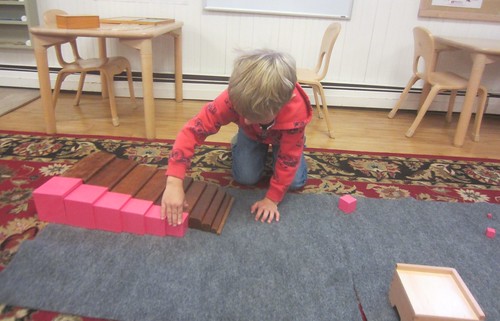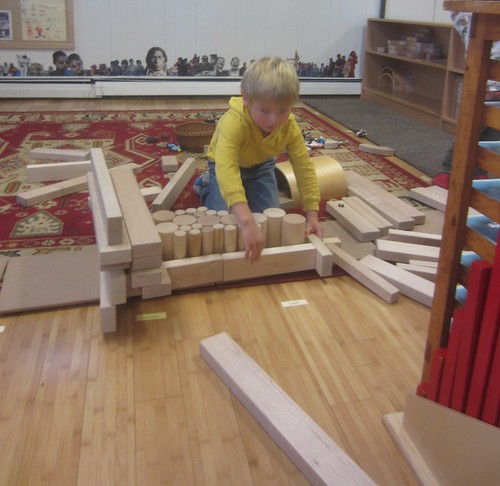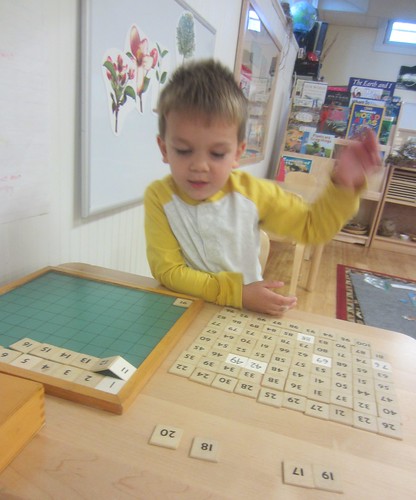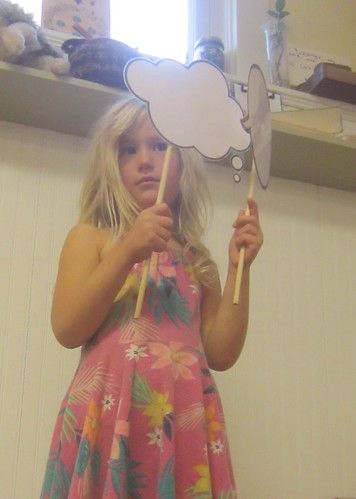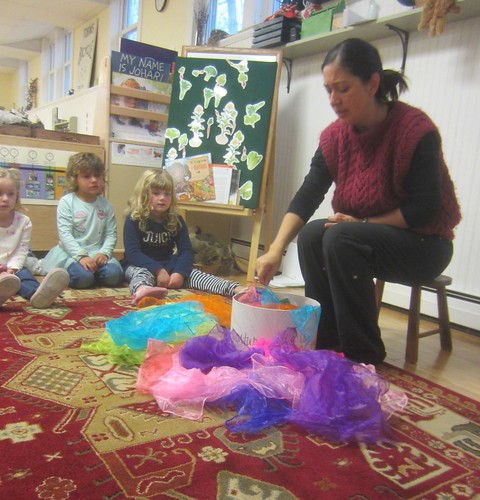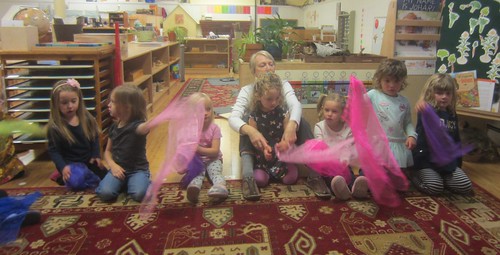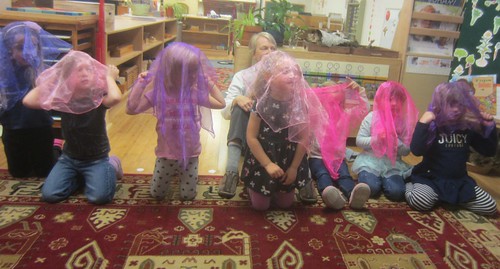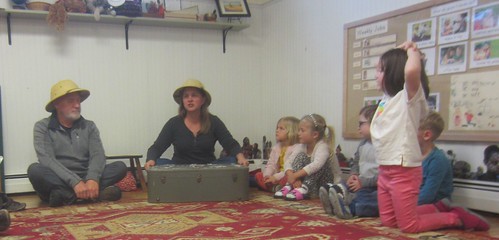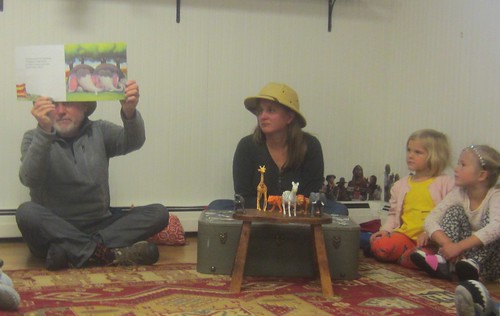We had clouds, sun, wind, and rain this week to give us some weather variety. The children climbed up, passed over, and balanced on stumps, tables, and benches assembled into an obstacle course. A restaurant served a wide variety of dishes from blueberry soup, to mac and cheese with hotdogs, Nick’s Pizza (from Santa’s Village), waffles with maple syrup, and strawberry lemonade. Some of us had Santa’s Village adventures riding the log flume, roller coaster, and skyway tram. Trucks were hauling leaves, digging huge holes, and getting repairs in the shop.
The art table was busy with Earth and moon activities. We reviewed the layers of the Earth with Susan, then she showed us an activity to make our own Earths with the four layers. She started with a marble as the inner core, a layer of clay for the outer core, a thicker layer of play dough for the magma filled mantle, and a super thin layer of aluminum foil for the crust. Most of the children created their very own Earths, some using permanent markers (after donning T-shirt smocks) to add land and water. The children also began work on moon phases charts with Tammy. They first painted two paper plates black, then punched out pictures of the moon in 8 different phases and the corresponding labels. Once the paint was dry, they cut a notch in one paper plate, glued the moon phases and labels to the other plate, then attached them with a brad so you can turn the top plate to track the phases. With help from Tammy they are matching the phases and labels to ensure they are in the proper order.
We read several stories about the moon; Moon by Britta Teckentrup, A Big Mooncake for Little Star, and Faces of the Moon. Susan recited several great moon poems and songs, including The Daytime Moon, The Moon, about how the moon has no light of its own, and Who Nibbles the Moon? We discussed how the moon gets its light. Does it make its own? Does it come from somewhere else? We turned off all the lights and looked at our moon model. It was not light and glowing, making its own light like when we light the candle sun for birthdays. When we shined the light on it we saw it light up, reflecting the light just like the moon reflects the light of the sun. We learned that the moon is actually grey and made of rock and dust. A moon is not a planet like Earth or a star like the sun. It is a space rock that orbits the Earth. We discussed how the moon looks different on different nights, sometimes looking big and round, and sometimes small and thin. We wondered why the moon changes like this. The children took turns holding an earth model and a moon model while the sunlight shone on them. As the moon passed behind the earth, we observed that the Earth created a shadow over the moon, so what we could see of the moon changed from a crescent to quarter, to gibbous, to full and back.
In the sensory table the children measured out and combined flour and baby oil to make some soft moldable moon sand. They had great fun pushing, packing, and molding it into various shapes and structures.
We read A Tale of Two Beasts, by Fiona Roberton. The story is divided into two tellings, first from the girl’s perspective, then from the creature’s perspective. They both have different versions, ideas, thoughts, and feelings about what happened. Some children made observations about how the two “beasts” were feeling based on their expressions and body language. We talked about perspective taking, and understanding that thoughts and understandings about things may be different or the same, but we only know what someone else is thinking if they say it. We introduced thinking bubbles and discussed how thinking is done in your head where you think in words and pictures, but they are silent and only you know what they are. Other people my make a guess about how you might be feeling and why based on your facial expressions and body language, but no one can know the thoughts in your head unless you speak them. We introduced talking bubbles and discussed how we can share our thoughts, feelings, ideas, and observations by voicing them. We read There’s a Bear in My Chair, then asked everyone to close up their lips tight and just THINK, without speaking, about the one food that they would choose to eat right now if they could have anything. Some students took turns going with Tammy to write down their food on the back of their thinking bubble. They then called on other students to guess what they were thinking. When it was time, we moved their food word to the speaking bubble and they told everyone what they had been thinking. Perspective taking has been shown by researchers Larry Aber and Kenneth Dodge to be one of the primary skills needed to handle conflict.
This week during sign language with Rose we learned seasonal signs. First we learned the sign for fall (the season), formed by tilting one arm and brushing the fingers of the other hand by the elbow. The trees start to loose their leaves, so we learned the sign for leaf, placing a flat hand at the end of a pointed finger. The temperature changes, so we learned the sign for cool, which is simply fanning a hand by your face. Pumpkin is made by the letter P sign tapped on top of a fist, and for turkey we take two fingers to outline the turkey waddle down the throat.
During Spanish Thursday morning with Zeanny we sang all the songs! The color song, the body song, Cabeza, Hombros, Piernes, Pies (Head, Shoulders, Legs & Feet), and played arriba (up) & abajo (down). We played games and made rhythms about colors, positions, speed and greetings with colorful scarves & egg shakers, and read about an Oso (bear) and his casa (house).
Katie and A.O. from Believe in Books visited to read us a story about the zoo. They had a big suitcase and Katie asked us if we knew what an imagination is. The children responded that it is playing pretend. Katie and A.O. put on their imagination adventure hats and asked us to imagine what our adventure hats would look like, and pretend to put them on. Katie pulled several animals out of the suitcase and named them, though she seemed to be confused about what an elephant is until the children gave her some pointers. We then used our imaginations to pretend that we were taking a trip to the zoo while A.O. read a story called Animal Strike at the Zoo, It’s True! Afterwards, everyone got to choose a book to take home and keep for their very own. We all made sure to say, “Thank you!” to A.O. and Katie before they adventured off to the next school.
For Friday science we briefly recalled the two groups of living things, plants and animals (there are actually a few others, but we stick to these two more observable groups) and did a plant and animal picture sorting activity. We then learned that plants and animals are divided into groups by characteristics, and today we learned about mammals. We read that mammals have hair or fur, their babies are born alive (not from eggs except the echidna & platypus), and the mothers make milk to feed their babies. We then did a mammal/non mammal sorting activity with our play animals. It was a bit tricky. Do kookaburra’s have hair for feathers? Do whales actually have hair? Yes, they have whisker like hairs when young! So many questions to answer. After sorting some children chose to do a plant or animal color/cut/sort activity, but after coloring all the pictures decided to save the cutting and pasting for another day.

